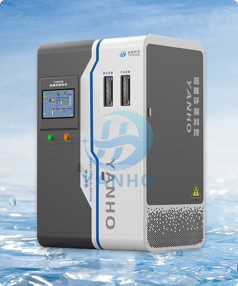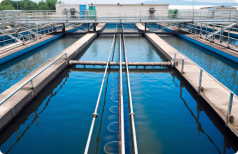Garbage infiltration treatment

During the process of landfill, various metabolic substances are generated due to anaerobic fermentation, organic matter decomposition, and rainwater leaching, resulting in the formation of high concentration organic waste liquid, namely landfill leachate.
Equipment Process
(1) Pre treatment: Introduce the leachate from the garbage transfer station into the neutralization tank for neutralization treatment, then into the coagulation tank for coagulation treatment, and then into the flocculation tank for flocculation treatment to obtain the leachate I;
(2) Denitrification treatment: Leachate I is introduced into a denitrification tank for denitrification treatment to obtain leachate II;
(3) Biochemical treatment: Leachate II is introduced into an aerobic biochemical tank for biochemical treatment, and organic pollutants are decomposed by aeration to obtain leachate III;
(4) Membrane treatment: Leachate III is introduced into a membrane bioreactor for biochemical degradation of organic pollutants to obtain leachate IV;
(5) Adsorption treatment: Leachate IV is introduced into an activated carbon pool and directly discharged after adsorption and filtration.
Equipment Advantages
-

Small footprint
The equipment is highly integrated and skidded, with a short process and a small footprint
-

Environmental pollution-free
No need for (small amount) chemicals, sludge reduction (90% reduction), environmentally friendly technology
-

Effect improvement
Multiple catalytic oxidation technology enhances the ozone oxidation effect by more than four times
-

Stable performance
Strong impact resistance and stable performance
-

low cost
Low operating and maintenance costs
-

Safety and environmental protection
Fully enclosed automatic operation under pressure, safe, stable, and environmentally friendly
设备参数
Application Area
-

Pharmaceutical wastewater treatment
-

Municipal wastewater treatment
-

Treatment of landfill leachate
-

Oily wastewater treatment
-

Food wastewater treatment
CONTACT US

Official Account


Mobile Browsing






 Hotline:
Hotline: Address:No.76 Longfei Road, Chengyang District,Qingdao, Shandong Province, China
Address:No.76 Longfei Road, Chengyang District,Qingdao, Shandong Province, China E-mail:y15092162376@163.com
E-mail:y15092162376@163.com